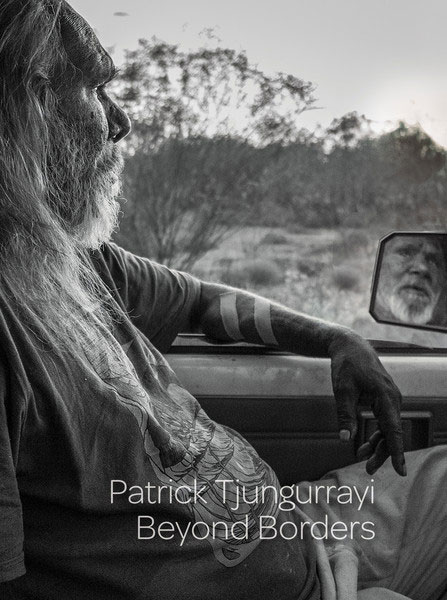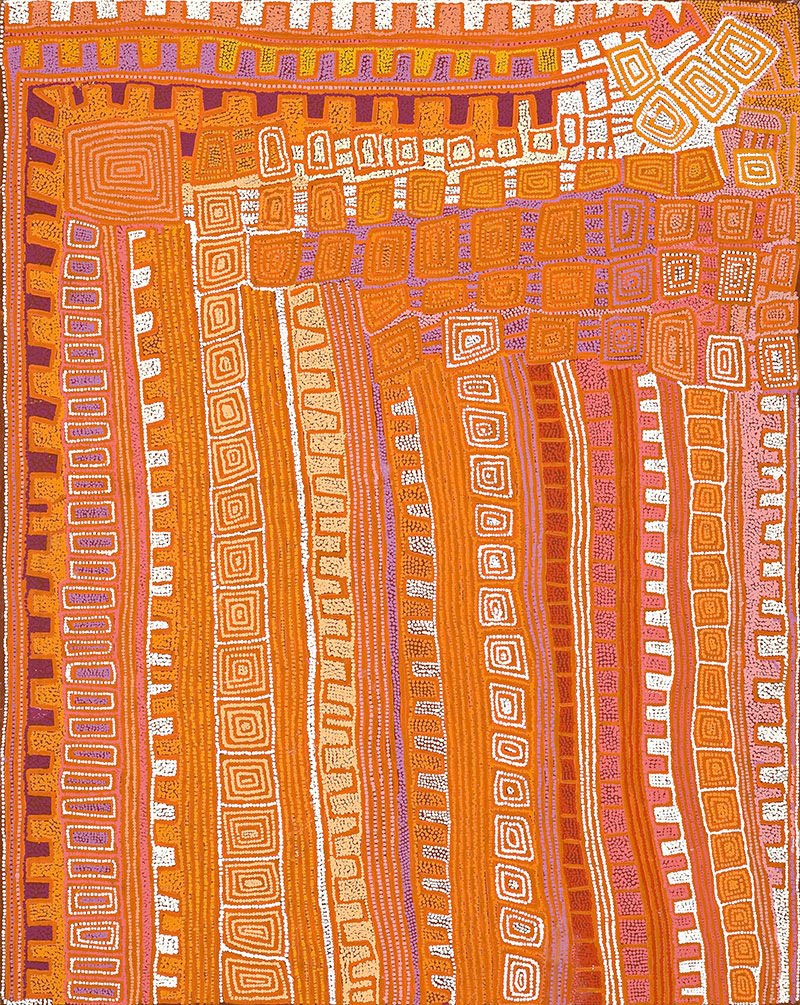
Patrick Tjungurrayi: Beyond Borders, edited by John Carty, traces the life of Patrick Alatuti Tjungurrayi, an Aboriginal lawman , community leader and one of Australia’s most celebrated contemporary artists. Tjungurrayi is also a dialysis patient, whose fight for the delivery of treatment in his homeland community of Kiwirrkurra, as retold in the book, is a rousing statement about the rights of Aboriginal people to healthcare on Country in 21st century Australia.
Tjungurrayi’s story unfolds in two essays. The first is by Carty, an anthropologist trained under Howard Morphy at the Australian National University and now Head of Anthropology at the South Australian Museum. The second is by Sarah Brown, CEO of the Purple House, a health and social support service run out of Alice Springs by the Western Desert Nganampa Walytja Palyantjaku Tjutaku Aboriginal Corporation (WDNWPT). Tjungurrayi as described in their texts is a man of immense power and persuasion, of humour, wit and indomitable character.
Carty first met Tjungurrayi at Balgo in 2002. The lasting impression of this encounter and subsequent experiences and interviews with his subject are the primary sources of Carty’s account. Structured in four sections – early life, mission life, painting and dialysis – the story tracks the length and breadth of the Western Desert over the course of some 75 years. It commences in the late 1930s with Tjungurrayi’s birth at Jupiter Well and leaves off in 2014 following his eventual return to Country in remote Western Australia.
Brown’s text picks up the latter part of Tjungurrayi’s life; his involvement in the establishment of the Purple House in early 2000, his own diagnosis of kidney disease in 2009 and ensuing push to ensure the availability of treatment at Kiwirrkurra. The fraught ruling by the Northern Territory Health Department preventing residents across the border from accessing health services in Alice Springs, handed down the year Tjungurrayi commenced dialysis, would have permanently separated him from Country and kin had the Purple House not intervened.

One of the strengths of this excellent publication is the unwavering presence of Tjungurrayi’s voice. It reverberates in extended quotes that describe his links to Country, recount his people’s first contact with white Australians and his own subsequent engagement with missionaries and other non-Indigenous people from across the region and beyond. His bearing is amplified by high-quality images of people and place, many of which reflect his stature as a respected community leader.
Tjungurrayi also communicates directly with us through his art, the glowing colour reproductions of some of his most accomplished works including prize winning entries at the Western Australian Indigenous Art Award (2008) and National Aboriginal and Torres Strait Islander Art Awards (2001). While Carty explores these in compelling art historical terms, unpacking determinants of colour and composition, the paintings also speak eloquently for themselves. Indeed, both luminous and lyrical, it is as if they sing the land from which they are inspired. It is no coincidence that images of the paintings are symbolically positioned at the centre of Tjungurrayi’s life story.
In her foreword, Hetti Perkins states “[t]his story sits at the nexus of art, health and history, of country, culture and community. It’s an invitation to sit for a moment in this present and see the whole picture through the prism of one man”. In view of this, the ultimate success of the book is its accessibility: the use of language pitched to a broad public, the gently unfolding narrative to reveal a life of epic proportions and deft juxtaposition of word and image that welcomes us to Tjungurrayi’s world.


